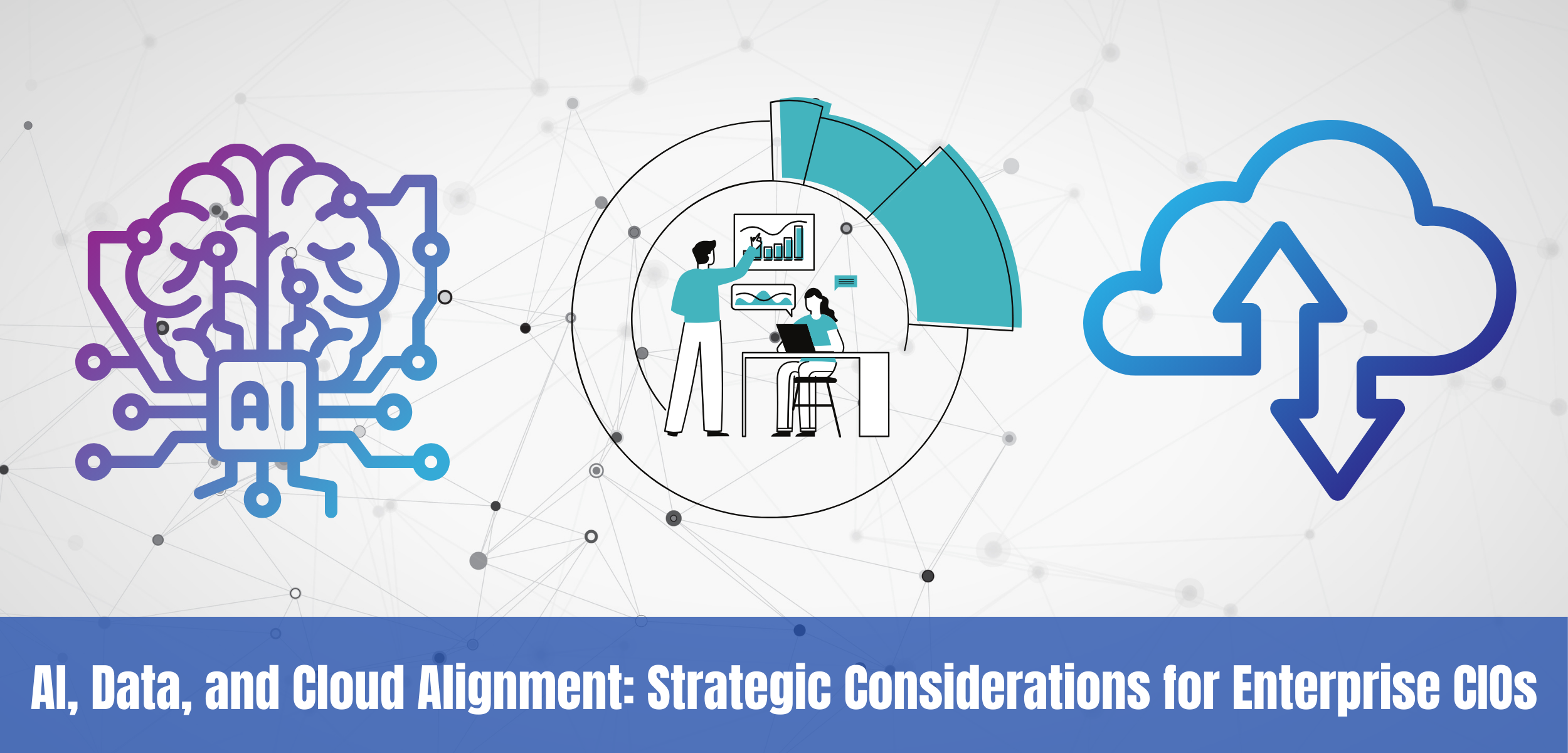Businesses using digital transformation have usually been more efficient than others, with reduced cost structures and excellent experiences provided to customers.
To help companies chart a future-proof digital transformation journey, this blog delves into the key elements and strategic thinking required for confident change.
.png?width=860&height=746&name=image%20449%20(1).png)
Core Components of a Digital Transformation Strategy
A good Digital Transformation strategy is based on several core elements that ensure an organization seamlessly integrates new technologies, processes, and cultural changes.
1. Effective Planning
Proper planning is the backbone of any successful digital transformation. It initiates with a comprehensive assessment of your current business operations and digital capabilities.
The critical question identifies the weaknesses and misalignments between existing processes and the emerging technological landscape. To drive meaningful change, align clear objectives toward the customer's needs and the business goals.
It includes some of the strategic planning activities, such as:
%207.png?height=15&name=check-mark%20(1)%207.png) Defining the right objectives and goals
Defining the right objectives and goals%207.png?height=15&name=check-mark%20(1)%207.png) Customer experience improvement
Customer experience improvement %207.png?height=15&name=check-mark%20(1)%207.png) The right choice of the appropriate technology
The right choice of the appropriate technology%207.png?height=15&name=check-mark%20(1)%207.png) Standardization of processes where they are needed
Standardization of processes where they are needed%207.png?height=15&name=check-mark%20(1)%207.png) Detailing the action roadmap
Detailing the action roadmap
Without a perfect plan, all efforts to transform quickly take the wrong route, wasting resources and stalling progress.
2. Robust Change Management
Digital transformation brings changes across every layer of an organization. It brings about various technological transformations and necessitates several cultural adjustments within the organization.
Employees will face new ways of working. Resistance to change is a natural and universal response to change in general; hence, it needs to be tackled with a structured approach.
Therefore, it is necessary to educate employees on the benefits of digital transformation. Organizations should communicate with their employees about how changes will improve workflows, customer satisfaction, and overall performance.
Such support is achievable by providing intensive training sessions and opening communication channels for employees to voice their opinions and advice.
Regular contact and constant communication create an environment that accepts digital transformation and inspires innovation.
3. Data-Driven Decision Making
Data has become the lifeblood of digital transformation. Businesses nowadays make better, informed decisions because of data. Data enables organizations to identify inefficiencies and pain areas associated with customer needs and new opportunities emerging from data analysis.
This approach helps in quickly adapting to market changes and enhances the outcome of being agile enough to meet evolving customer needs.
It helps companies collect and analyze data to understand which strategies are more effective at digital transformation and where improvements are needed.
Data may also unlock new revenue streams, streamline operations, and provide better customer experiences for organizations.
4. Focusing on Technology Infrastructure
A digital transformation should take place in an environment that has a well-established and robust technology infrastructure to foster and leverage the requirements of new digital tools, platforms, and processes.
It is key to focus on implementing technologies that can grow and adapt to your business, such as cloud computing, AI, data analytics, and digital experience.
For example, cloud-based migration creates a scalable and flexible environment, meaning a business can adapt to changing needs.
Data analytics and AI can also contribute to insights related to operational efficiency and customer behavior, which in turn can give an organization a slight edge.
A robust technology base ensures that your digital transformation strategy remains future-proof.
Key Considerations for Crafting a Future-Proof Strategy
To ensure that your digital transformation efforts are sustainable and adaptable in the long term, it’s important to incorporate specific strategic considerations.
Here are key factors to keep in mind when crafting a future-proof digital transformation strategy:
1. Create a Strategy
A well-designed strategy for digital transformation forms a basis for your future success. Analyze your business operations. Identify inefficiencies in your processes. Set clear goals aligned with your broader objectives. These are all good starting points.
Use data-driven insights to understand pain points and opportunities, which will make it easier to design a tailored strategy aligned with your organization's needs.
Key elements your strategy should contain:
%207.png?height=15&name=check-mark%20(1)%207.png) Prioritize goals that will deliver the maximum value.
Prioritize goals that will deliver the maximum value.%207.png?height=15&name=check-mark%20(1)%207.png) Determine the integration of new technologies with existing systems
Determine the integration of new technologies with existing systems%207.png?height=15&name=check-mark%20(1)%207.png) Create measurable KPIs for tracking progress
Create measurable KPIs for tracking progress%207.png?height=15&name=check-mark%20(1)%207.png) Implement feedback loops, allowing continuous improvement
Implement feedback loops, allowing continuous improvement

2. Work on Alignment
Alignment is key for a successful digital transformation. It ensures your business goals, employee efforts, and strategy are in sync. It should not be just a matter of technology but also of aligning the entire organization to the new workflows, tools, and customer experience.
%207.png?height=15&name=check-mark%20(1)%207.png) Involve and educate the senior management, leadership, and employees on how changes in digital transformation would affect them.
Involve and educate the senior management, leadership, and employees on how changes in digital transformation would affect them.%207.png?height=15&name=check-mark%20(1)%207.png) Develop an internal communications plan that keeps people informed and engaged.
Develop an internal communications plan that keeps people informed and engaged.%207.png?height=15&name=check-mark%20(1)%207.png) Prepare employees to change using adequate training and support.
Prepare employees to change using adequate training and support.%207.png?height=15&name=check-mark%20(1)%207.png) The better your workforce is aligned with your transformation goals, the more efficient and sustainable it will be.
The better your workforce is aligned with your transformation goals, the more efficient and sustainable it will be.
3. Start Small and Iterate
Starting small is one of the most practical ways to ensure your business succeeds. You can start with very small, less complex parts of the business if you have a big business and then scale up.
Pre-test and validate your ideas on a much smaller scale to see what works and what doesn't before involving the entire organization.
%207.png?height=15&name=check-mark%20(1)%207.png) This will allow pilot projects to enable preliminary data collection, assessment of outcomes, and an opportunity to learn from mistakes in a controlled environment.
This will allow pilot projects to enable preliminary data collection, assessment of outcomes, and an opportunity to learn from mistakes in a controlled environment.%207.png?height=15&name=check-mark%20(1)%207.png) The focus should be on winning quickly and with momentum to create a platform from which even larger-scale transformation efforts might be deployed.
The focus should be on winning quickly and with momentum to create a platform from which even larger-scale transformation efforts might be deployed.%207.png?height=15&name=check-mark%20(1)%207.png) Refine your strategy through these initial implementations and iterate along with feedback and insights.
Refine your strategy through these initial implementations and iterate along with feedback and insights.%207.png?height=15&name=check-mark%20(1)%207.png) Start small, be flexible enough, absorb the risk, and take care to ensure that your efforts at transformation are adaptable.
Start small, be flexible enough, absorb the risk, and take care to ensure that your efforts at transformation are adaptable.


3. Start Small and Iterate
Starting small is one of the most practical ways to ensure your business succeeds. You can start with very small, less complex parts of the business if you have a big business and then scale up.
Pre-test and validate your ideas on a much smaller scale to see what works and what doesn't before involving the entire organization.
%207.png?height=15&name=check-mark%20(1)%207.png) This will allow pilot projects to enable preliminary data collection, assessment of outcomes, and an opportunity to learn from mistakes in a controlled environment.
This will allow pilot projects to enable preliminary data collection, assessment of outcomes, and an opportunity to learn from mistakes in a controlled environment.%207.png?height=15&name=check-mark%20(1)%207.png) The focus should be on winning quickly and with momentum to create a platform from which even larger-scale transformation efforts might be deployed.
The focus should be on winning quickly and with momentum to create a platform from which even larger-scale transformation efforts might be deployed.%207.png?height=15&name=check-mark%20(1)%207.png) Refine your strategy through these initial implementations and iterate along with feedback and insights.
Refine your strategy through these initial implementations and iterate along with feedback and insights.%207.png?height=15&name=check-mark%20(1)%207.png) Start small, be flexible enough, absorb the risk, and take care to ensure that your efforts at transformation are adaptable.
Start small, be flexible enough, absorb the risk, and take care to ensure that your efforts at transformation are adaptable.
4. Consider Compliance Requirements
The integration of digital technologies will most likely bring about new regulatory and compliance issues, especially when dealing with sensitive customer data or in heavily regulated sectors.
Therefore, it becomes prudent to ensure that your transformation strategy, in terms of using digital technologies, complies with relevant regulations. This is crucial to avoid legal risks, penalties, or operational disruptions.
%207.png?height=15&name=check-mark%20(1)%207.png) Review all applicable industry standards, external regulations, and internal compliance requirements.
Review all applicable industry standards, external regulations, and internal compliance requirements.%207.png?height=15&name=check-mark%20(1)%207.png) The related departments of IT, law, and compliance should be approached early in the implementation process to avoid problems before their activation.
The related departments of IT, law, and compliance should be approached early in the implementation process to avoid problems before their activation.%207.png?height=15&name=check-mark%20(1)%207.png) Newly developed technologies and business processes shall also be GDPR-HIPAA compliant, if applicable, for all regions or industries.
Newly developed technologies and business processes shall also be GDPR-HIPAA compliant, if applicable, for all regions or industries.
This compliance requirement should be addressed in its creation so that it won't delay the process and ensure digital systems are secured and free from interference.
5. Evaluate and Restructure
The process of digital transformation does not end in implementation. You need to continually check whether your strategy is achieving the desired outcome or not.
As market conditions change and new technologies emerge, businesses need to be prepared to adjust and restructure their strategy to maintain a competitive advantage over time.
%207.png?height=15&name=check-mark%20(1)%207.png) Continually measure the effectiveness of your digital initiatives using KPIs and feedback from stakeholders.
Continually measure the effectiveness of your digital initiatives using KPIs and feedback from stakeholders.%207.png?height=15&name=check-mark%20(1)%207.png) Use data-driven insights for things that could be refined or optimized.
Use data-driven insights for things that could be refined or optimized.%207.png?height=15&name=check-mark%20(1)%207.png) Be prepared to change parts of the plan in case something does not work or an opportunity arises.
Be prepared to change parts of the plan in case something does not work or an opportunity arises.
.png?width=1434&height=1380&name=image%20(48).png)
Bringing It All Together For a Successful Digital Transformation
A proper future-proof digital transformation strategy implies addressing all key concerns. Additionally, the strategies above should be adopted. If you are concerned about managing all this, consider partnering with a digital transformation expert for easier management.
Businesses must adapt to all technological developments to stay updated; therefore, embracing digital transformation is important and should be tailored to each business's specifications.
Evermethod, Inc. is a digital transformation partner that can help you achieve sustained success. We are ready to support you in creating an effective strategy for any digital transformation.
Get the latest!
Get actionable strategies to empower your business and market domination
.png?width=882&height=158&name=882x158%20(1).png)

.png/preview.png?t=1721195409615)

%2013.png)


